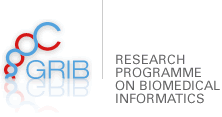
Thursday, 4th October, 2018, 12:00
Is ribosome profiling better than RNA-seq for estimating protein abundances? A case study in Saccharomyces cerevisiae in normal and oxidative stress conditions
Yeast cells respond dynamically to different environments; often this response involves adjusting the abundance of different proteins. In many published experiments, this cellular response is studied by proxy-measuring variations in transcript abundance across different conditions using high throughput RNA sequencing. However, variations in transcript abundance do not always reflect changes in protein abundance. Ribosome profiling, or Ribo-seq, specifically targets only the ribosome-protected fragments of RNA; as there is pervasive translation of ribosome-assocaiated RNAs, this would be expected to provide a more accurate view of changes at the protein level than RNA-seq. We performed a differential gene expression analysis of oxidative stress in baker's yeast using RNA-seq, Ribo-seq, and liquid chromatography mass spectrometry. A subset of genes involved in oxidation-reduction processes is detected by RNA-seq and Ribo-seq, but RNA-seq also identifies many genes which are not significant in the Ribo-seq analysis which suggests that significant changes in mRNA abundance do not always result in different protein abundance. Furthermore, the proteomics data more closely resemble the Ribo-seq results than RNA-seq. Our findings demonstrate that there could be limitations to using RNA-seq when making inferences about changes in protein abundance and the potential of Ribo-seq to fill this gap.
Speaker: Will Blevins, Evolutionary Genomics Group - Research Programme on Biomedical Informatics (GRIB, IMIM/UPF)
Room Aula 473.10 (PRBB, 4th floor)


